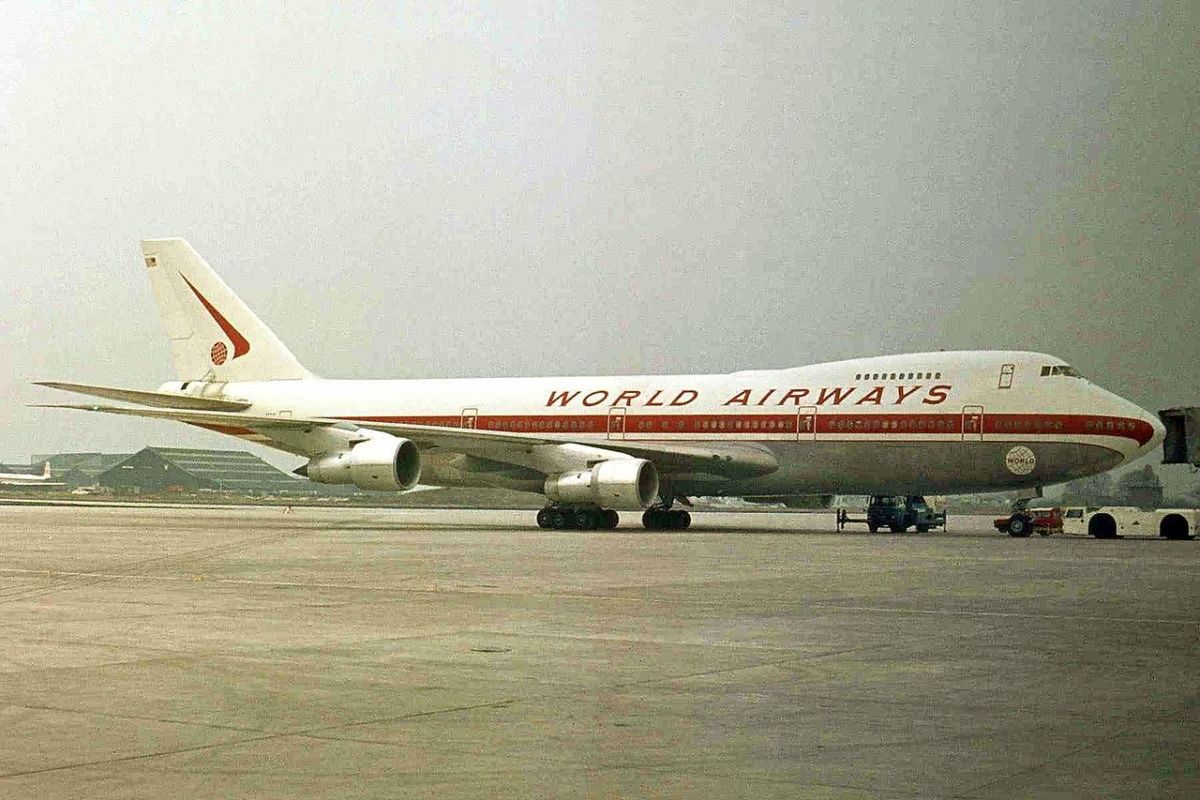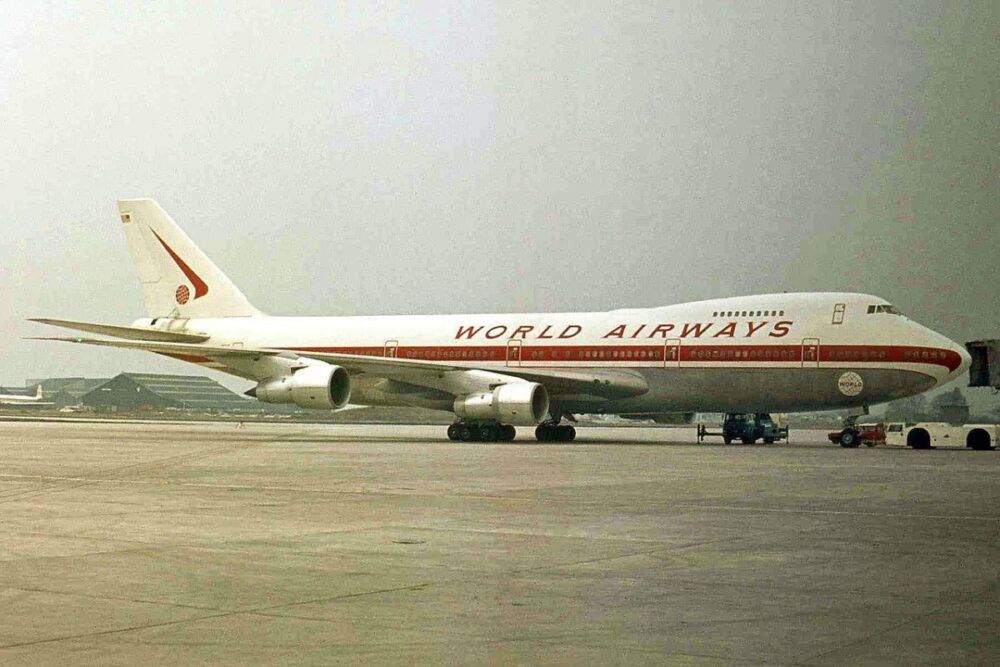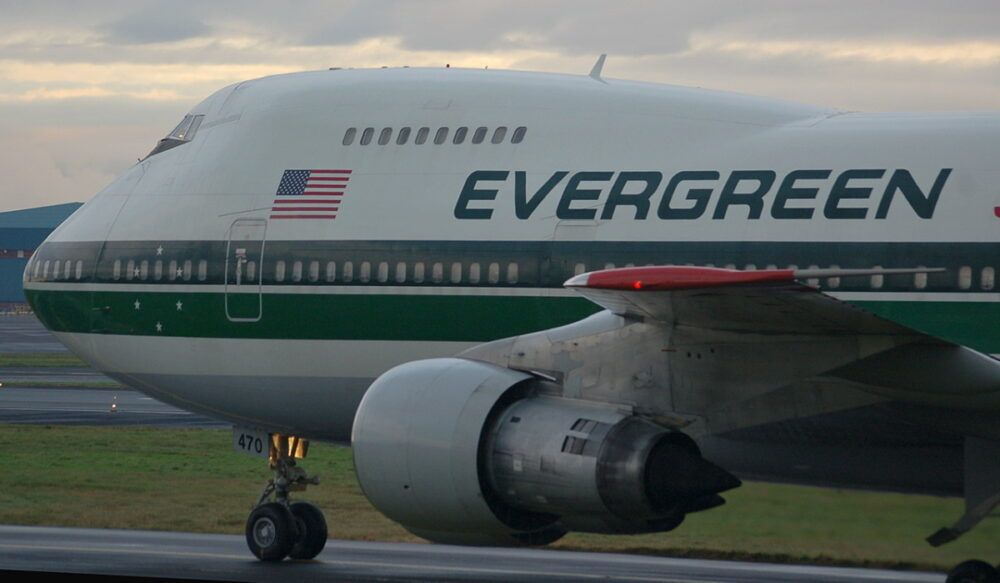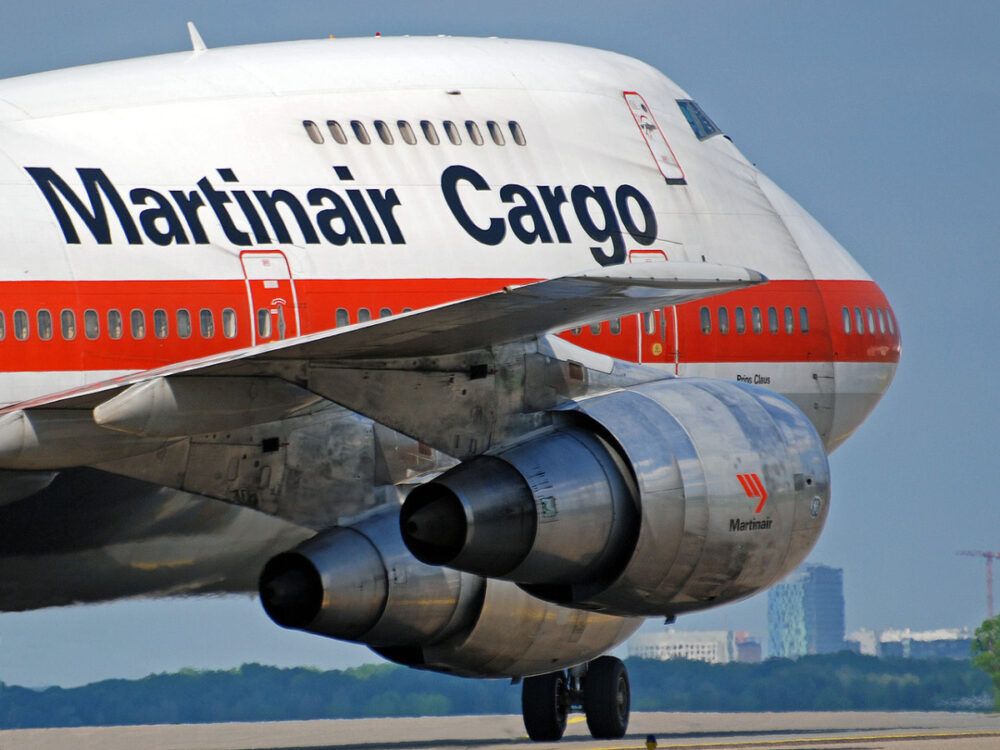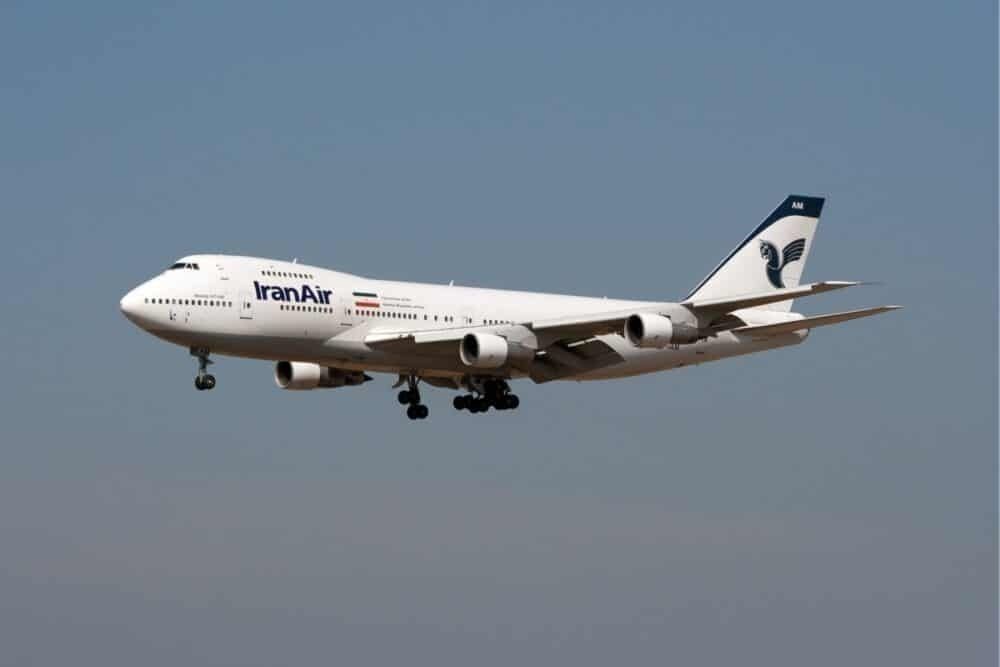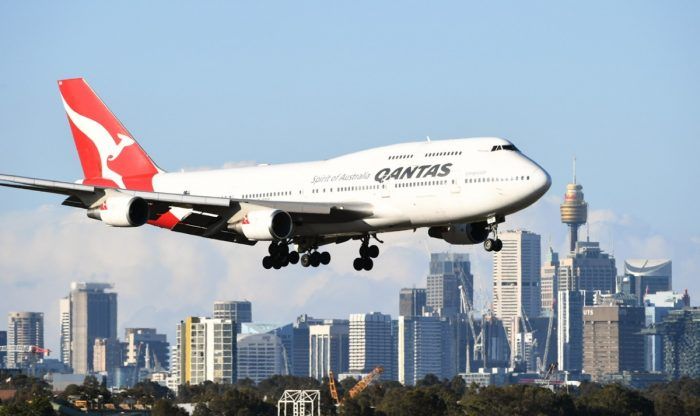The Boeing 747 is one of the most legendary jets in commercial aviation history. The Queen of the Skies has been in commercial service for 50 years and has revolutionized air travel along the way. There are several variants of the jumbo, all serving their own purpose. However, one of the unique models is the 747-200C, which is a convertible version of the iconic aircraft.
A flexible approach
This variant could be configured for an all-cargo or all-passenger setup. Additionally, operators could choose to set a combination of the two interiors. The plane type was designed with a forward nose-opening cargo door and removable seats. Furthermore, the -200C's main deck could be fitted with an optional side cargo door.
One of the most prominent features of the 747 was its upper deck. Carriers across the continents all had their own spin on how to make use of this compartment. For instance, Delta Air Lines chose to transform it into a flying penthouse when it introduced the jet in 1970.
Stay informed: Sign up for our daily aviation news digest.
The -200C's deck could be configured in four ways. Operators could insert a 15 place lounge for the most room for movement. Alternatively, they could introduce eight first class seats if they wanted an 11 place lounge. For overnight flights, there was room for 16 sleeper seats. Or for a more standard approach, up to 45 economy class seats could fit at the upper level.
This type was in operation not so long after the 747 launched. World Airways took on a convertible unit with meter serial number 20651 in April 1973. Under registration N747WA, it was leased to Pan Am Cargo from October 1974 until December 1979.
It hopped across several operators for use in cargo flights, including Air India and Saudi Arabian Airlines, before Evergreen International Airlines ceased operations in 2013. The plane has remained in storage ever since.
Global ventures
Martinair was one of the key operators of the aircraft, operating two of them. They were both manufactured at the Boeing Everett Factory in Seattle. Additionally, they were fitted with General Electric CF6-50E2 engines to help it power through long-haul adventures across the globe.
According to Planespotters.net, the older of the two was produced with manufacturer serial number 23652 and entered service with Martinair in February 1987 with registration PH-MCE. The jet affectionally held the grand title of Prins van Oranje. It remained with the Schiphol-based cargo outfit for two years until February 1989 when Virgin Atlantic took it on for its shipping operations.
However, the British outfit did not hold the plane for long as it returned to Martinair in April that year. Once back in the Dutch company's holdings, it remained a long-term asset. After 18 years of hitting the skies, the -200C said goodbye to Martinair.
In May 2007, the aircraft changed its registration number to EC-KEP and became part of Girjet's fleet. The Spanish firm used it on cargo services until April 2008 when Pegasus Aviation took it on as registration N652AP. The US-based leasing company held onto it until September 2009 when Pakistan's Rayyan Air operated delivery routes with it as AP-BIB.
Finally, it arrived at Aerospace One in June 2013 with registration number SX-ASC. However, the Greek shipping company stored it at Sharjah International Airport in April 2014. Since then it remains parked in the United Arab Emirates.
Different route
The younger sibling of the two 747-200Cs was built with manufacturer serial number 24134. The beginning of its career is similar to that of its counterpart. However, it ended up going on a different journey.
The plane arrived at Martinair with the nickname of Prins Claus in September 1988. With registration number PH-MCF, it went back and forth with Qantas twice over the next two years.
The aircraft's first revenue cargo service for the flag carrier of Australia was a flight between London Heathrow and Sydney under flight number QF704 on October 1st, 1988. Additionally, it was deployed on several other shipping routes to the likes of Singapore, Bahrain, Frankfurt, and Rome.
Eventually, Martinair held onto it from April 1990. Just like the other unit, this plane remained with the company for 18 years. The final revenue operation was on a delivery route between Tianjin, Nanjing, Bangkok, Sharjah, and Amsterdam under flight number MP78 on October 27th, 2007.
In April 2008, Ansett Worldwide snapped up the jet and entered it into service with registration number N134AP. The Irish leasing specialist held onto it for only a month before shifting it to Turkey's Ankair.
The Istanbul-based firm took it on as TC-AKZ but also only held it for a month. The carrier had ceased operations in 2008, after only three years in business.
Subsequently, the plane moved west to join the fleet of Iran Air with registration number EP-ICD in June 2008. Like its older sibling, it also currently on the ground.
Unfulfilled potential
Although the 747-200C can perform both passenger and cargo services, its operators primarily chose to use it for the latter. One of the main reasons for this is that these jets were mostly in the hands of shipping specialists. Therefore these holders were not inclined to convert them into passenger units.
Additionally, when the likes of Pan Am, Qantas, and Iran Air took on the aircraft, they already had passenger 747s in their fleet. So, they had less need for another one but took on this particular type to fulfill delivery needs.
Altogether, the idea of a convertible 747 aircraft sounds excellent on paper. Yet, in reality, it seems that airlines needing the jumbo for commuter services preferred the passenger-focused option.
What are your thoughts on the Boeing 747-200C? Have you come across this model before? Let us know what you think of the jet in the comment section.

